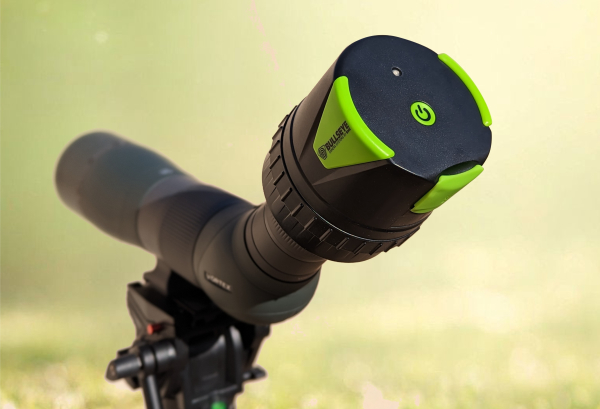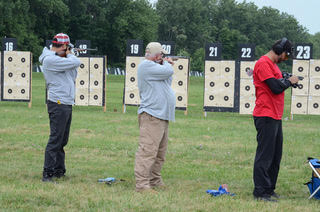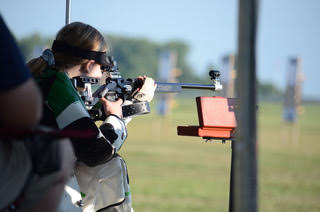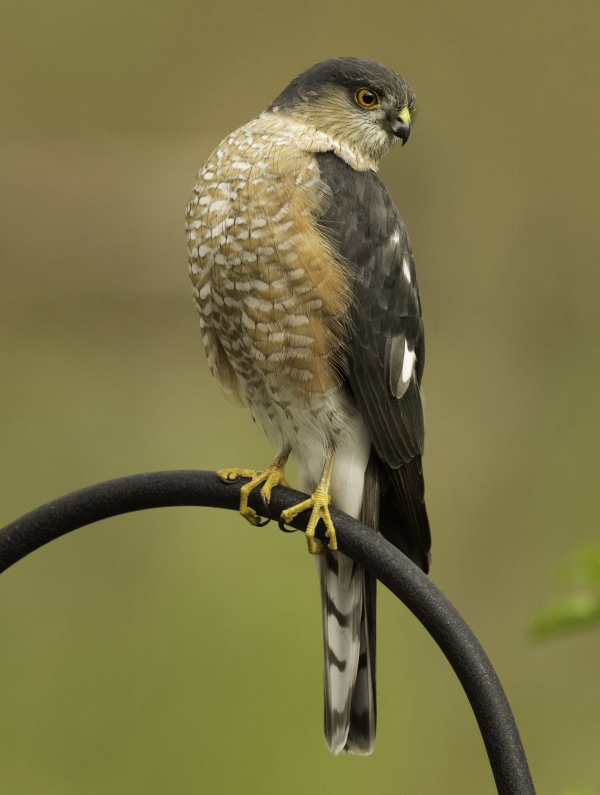Multi-year FWC investigation “Operation Viper” leads to numerous charges for venomous and prohibited snake traffickers
On January 12, 2023, the Florida Fish and Wildlife Conservation Commission (FWC) Division of Law Enforcement (DLE) filed charges against eight individuals, ranging from second degree misdemeanors to third-degree felonies related to the illegal trafficking of venomous and prohibited snakes.
The FWC has been receiving intelligence reports and complaints indicating that a black market exists for the sale and purchase of illegal and highly dangerous venomous reptiles in Florida. In 2020, the FWC initiated a long-term investigation with undercover investigators to determine the extent of this illegal activity and hold violators accountable.
The illegal sale, purchase, transport and caging of these regulated animals pose a significant public safety threat, undermines legitimate captive wildlife dealers operating legally and threatens the long-term well-being of state wildlife populations. If these illegal and dangerous nonnative species were to escape, they could easily live and breed in Florida’s subtropical climate.
Over the course of the investigation, nearly 200 snakes, consisting of 24 species from seven different regions of the globe, were purchased or sold by FWC undercover investigators to or from wildlife traffickers. Some of those species include the inland taipan, bushmaster, rhinoceros viper, African bush viper, Gaboon viper, green mamba, eyelash viper, multiple species of spitting cobra, forest cobra, puff adder and saw-scaled vipers. Trafficking activity was unpermitted, and the subjects involved showed a complete disregard for the regulatory framework designed to keep Floridians safe.
“Some of these snakes are among the most dangerous in the world,” said Maj. Randy Bowlin, FWC DLE Investigations and Intelligence Section Leader. “Florida’s rules and laws are in place to protect the public and prevent tragedies from occurring.”
Much of the illegal activity was initiated on specialized websites or closed social media pages. Once these black-market deals were arranged, violators quickly transitioned to in-person meetings where they arranged to buy or sell potentially deadly species to undercover officers with full knowledge that they were unlicensed and could not purchase these snakes legally. Some of these individuals included wholesale dealers who imported large shipments of nonnative venomous snakes from multiple countries around the world. The FWC secured search warrants for many of the social media accounts to prove the illegal activity was occurring and identify additional subjects. Georgia DNR and the FWC also worked in conjunction on this investigation to target other suspects illegally transporting carloads of venomous snakes around the country in violation of multiple state laws. Covert meetings with officers from Georgia and Florida revealed that the suspects showed a complete disregard for this highly regulated activity.
The actions of individuals such as the ones charged today make our jobs at VENOM 1 and 2 only that much harder,” said Dr. Benjamin Abo, Primary investigator and Medical Director of Venom 1 and 2 Venom Response Units. “We fight every day to keep people alive and minimize permanent complications after a tragic bite occurs. The rules for the transportation, caging and handling of these animals are in place for important reasons.”
As often happens with long term investigations, non-wildlife crimes were documented by FWC investigators. “We’ve seen time and again that individuals who will break one law do not limit themselves to only one area of illegal activity,” said FWC DLE Director Colonel Roger Young. “Documented violations range from conservation second-degree misdemeanors to third-degree felony possession of a firearm by a convicted felon.”
This lengthy investigation developed additional suspects both in and out of Florida. FWC investigators realized early into the investigation that the black market for venomous reptiles in Florida was robust, and subjects identified in the operation were dealing reptiles frequently and in high numbers, often to or from unpermitted individuals. Caging, labeling, transport and handling rules were also often ignored by subjects and cited accordingly in today’s action.
“Some of the individuals apprehended by this operation are established dealers of snakes,” said FWC Commission Chairman Rodney Barreto. “Our law enforcement officers will continue to hold accountable those who disregard the rules which protect our natural resources of the state.”
Over the course of the investigation, FWC Investigations leadership made the determination to allow some violations to sunset due to statutes of limitations, in order to cast a wider net for additional violators. Hundreds of additional misdemeanor level violations were observed during the operation which were not charged in today’s activities.
Violations charged during this operation do not take into account that many of these snakes were probably sourced illegally from their home country of origin. A well established tactic for black market dealers is to launder illegally procured snakes through a properly permitted facility, so they may be sold without divulging their true origin.
“During this investigation, officers saw and heard disturbing evidence of widespread illegal activity, not the least of which were individuals who indicated that they were releasing or planning to release prohibited reptiles into nearby native habitat to establish a readily accessible wild breeding population,” said Investigations Section Captain Van Barrow.
Wildlife trafficking ranks fourth behind, drugs, weapons and humans in global activity, and is often a nexus for other illegal activity. There are many different estimates of the value of illicit wildlife trafficking worldwide. According to the Wildlife Conservation Society, illicit wildlife trafficking is estimated to be between $7.8 billion and $10 billion per year.
Actions taken by the FWC DLE Investigations Section on January 12 include:
Delvin Eugene Sasnett (11/21/1990) of Eagle Lake, FL – arrested and issued Notice to Appear
During the investigation, FWC investigators found evidence to charge Sasnett with a number of serious violations. In addition to illegal purchase or sale of venomous reptiles, he is also involved in the sale of other types of wildlife.
Polk County violations include:
- Possession of American Alligator (third-degree felony)
- Child Neglect (third-degree felony)
- Possession of prohibited species (first-degree misdemeanor)
- Possession of venomous reptile without a permit (first-degree misdemeanor)1
- Possession of captive wildlife without a permit (ESB) (first-degree misdemeanor)
- Possession of threatened species (first-degree misdemeanor)
- Unsafe conditions (first-degree misdemeanor)
- Illegal harvest of freshwater turtles (first-degree misdemeanor)
- Caging and biosecurity (second-degree misdemeanor)
- No enclosure label (prohibited species) (second-degree misdemeanor)
- No critical incident plan (second-degree misdemeanor)
- No or incomplete records for wildlife (second-degree misdemeanor)
- Transfer of prohibited species to/from unlicensed person (second-degree misdemeanor)
- Improper primary enclosure for venomous reptile (second-degree misdemeanor)
- Improper secondary enclosure for venomous reptile (second-degree misdemeanor)
- No bite protocol (second-degree misdemeanor)
- Improper caging of Class 2 wildlife (second-degree misdemeanor)
- Transporting turtle eggs (second-degree misdemeanor)
- Feeding alligators (second-degree misdemeanor)
William Chase Agee (08/01/1990) of Holly Hill, FL – arrested and executed search warrant
Agee is an unpermitted individual who has been involved in multiple illegal sales and purchases of venomous reptiles. A convicted felon, Agee was well aware of the regulations concerning these snakes. In addition to violations concerning venomous reptiles, Agee was also illegally in possession of a firearm, a third-degree felony.
Volusia County violations include:
- Possession of firearm by convicted felon (third-degree felony)
- Transportation/sale/possession of cannabis (third-degree felony)
- Illegal possession of ammunition (third-degree felony)
- Sale of venomous reptile to unlicensed person (first-degree misdemeanor)
- Possession of venomous reptile by unlicensed person (first-degree misdemeanor)
- Illegal transportation of venomous reptiles (second-degree misdemeanor)
- Illegal transportation of venomous reptiles (second-degree misdemeanor)
- Illegal transportation of venomous reptiles (second-degree misdemeanor)
- Purchase of prohibited species from unlicensed person (second-degree misdemeanor)
Dylan Isaac Levin (02/15/1992) of Palm Beach Gardens, FL – arrested
Levin was documented making multiple illegal purchases and sales of venomous reptiles. He falsified required records regarding venomous reptiles and was involved in the sale of a controlled substance.
Palm Beach County violations include:
- Sale of controlled substance (third-degree felony)
- Sale of venomous reptile to unpermitted individual (first-degree misdemeanor)
- Improper venomous reptile records (second-degree misdemeanor)
Edward Daniel Bays (07/31/1997) of Southwest Ranches, FL – issued Notice to Appear
Broward County, Miami-Dade County violations include:
- Possession of prohibited species (first-degree misdemeanor)
- Release of nonnative wildlife (first-degree misdemeanor)
- Transportation of prohibited species (second-degree misdemeanor)
- Transfer of prohibited species to/from unlicensed person (second-degree misdemeanor)
- Transporting wildlife in unsafe manner (second-degree misdemeanor)
Jorge Javier Gonzalez (10/29/1999) of Miami, FL – executed search warrant, issued Notice to Appear
Gonzalez is charged with the illegal trafficking of prohibited species, specifically Burmese pythons. On multiple occasions, FWC investigators documented the illegal sale and transport of these invasive prohibited species.
Broward County, Collier County, Hendry County, Miami-Dade County violations include:
- Possession of prohibited species (first-degree misdemeanor)
- Purchase of wildlife from unlicensed person (first-degree misdemeanor)
- Transfer of prohibited species to/from unlicensed person (second-degree misdemeanor)
- No safety entrance for prohibited species (second-degree misdemeanor)
- No escape proof room (second-degree misdemeanor)
- No enclosure label (prohibited species) (second-degree misdemeanor)
- No enclosure label (name/PIT #) (second-degree misdemeanor)
- Solicitation/Attempted Solicitation (second-degree misdemeanor)
Paul Edward Miller (07/21/1974) of Cape Coral, FL – issued Notice to Appear
Miller is a large importer of snakes, a well-established wildlife wholesaler and the owner of Calusa Animal Company. In addition to multiple violations regarding caging, labeling and husbandry, FWC investigators also documented instances where Miller aided in the falsification of required experience hours documentation.
Lee County violations include:
- Cage or secondary containment (second-degree misdemeanor)
- Unsafe or unsanitary conditions for captive wildlife (second-degree misdemeanor)
- Improper cage labeling (second-degree misdemeanor)
- Cage or secondary containment (second-degree misdemeanor)
Joseph David Switalski, Jr. (05/26/1985) of Plantation, FL – issued Notice to Appear
Switalski is a well-established reptile dealer and is the owner of JDS Holdings and Trading, LLC. Multiple illegal sales and purchases occurred involving Switalski during the investigation, with more than 60 snakes. Switalski is charged with multiple violations.
Broward County violations include:
- Sale of venomous reptile to unlicensed person (second-degree misdemeanor)
- Improper caging of venomous reptiles (second-degree misdemeanor)
- Improper cage identification (second-degree misdemeanor)
- Improper secondary containment for captive wildlife (second-degree misdemeanor)
- No enclosure label (venomous) (second-degree misdemeanor)
- Possession of venomous reptiles at unlicensed location (second-degree misdemeanor)
- Purchase of venomous reptiles from unlicensed person (second-degree misdemeanor)
Timothy James Gould (05/12/1984) of Central City, PA – arrested by Geogia Department of Natural Resources in Georgia, issued Notice to Appear
Gould is a well-established wildlife transporter and is unpermitted in the state of Florida for any captive wildlife, let alone venomous reptiles. He advertises his illegal transport services on a popular online marketplace for wildlife dealers. Working with Georgia Department of Natural Resources, the FWC identified Gould and documented his illegal activity in Florida. When arrested, Gould had 27 snakes in his possession illegally.
Levy County violations include:
- No import permit (first-degree misdemeanor)
- Sale or transfer to unlicensed person (second-degree misdemeanor)
- Improper labeling (second-degree misdemeanor)
- Improper caging (second-degree misdemeanor)
- Possession of venomous reptile without a permit (second-degree misdemeanor)
- No bite protocol (second-degree misdemeanor)
Charges have been filed with the appropriate State Attorney Offices, and judicial proceedings are pending.







